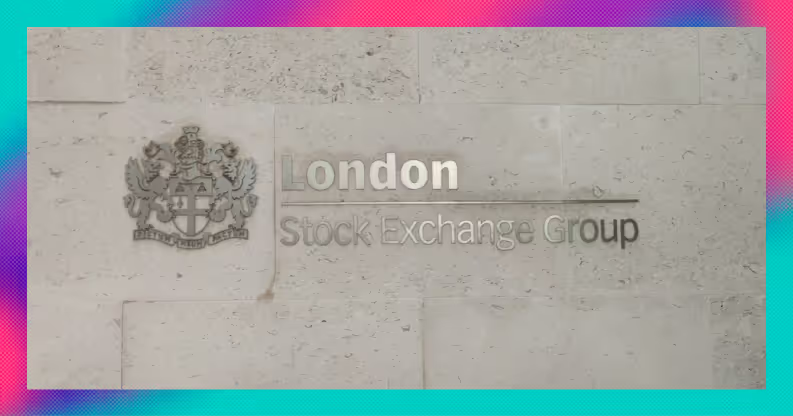Gold’s got a reputation.
The mineral has long been dubbed as a good hedge against inflation. Theoretically, that means when the pound loses purchasing power as inflation rises, gold should become more expensive. And if you hold gold and cash, then ideally, the shiny stuff might cushion some of the blow.
Or at least, that’s the story often told. The reality isn’t quite as clear.
The relationship between the price of gold and inflation is weak. Research from Duke University has shown that gold is only a good inflation hedge when measured over a century or longer. Don’t get us wrong here - a long term horizon is your best method of protection from the ups and downs of investing. But 100 years feels slightly out of reach.
Over shorter periods, the inflation-adjusted price of gold fluctuates in a similar way to other assets. It isn’t inherently more reliable.
It’s no guarantee that gold will perform well when inflation is high. If that were the case, gold’s price in real terms (or adjusted for inflation) wouldn’t fall for prolonged periods. Deflation aside, over time the price of goods tends to increase.
But gold’s price doesn’t always rise, and the Gold Bullion Securities ETC goes to show it.
Past performance is not a reliable indicator of future returns.
Source: FE as at 06/05/22. Basis: bid-bid in local currency terms with income reinvested.
This ETC, or Exchange-Traded Commodity, follows movements in gold’s spot price. It’s one of many on the market and provides direct exposure to changes in gold’s value, which as we can see, hasn’t always been on an upward trajectory.
So all that glitters isn’t gold?
This isn’t to say gold’s a bad investment or that it can’t have a role in a balanced and diversified portfolio.
But it is to say we shouldn’t take for granted the gold gospel many of us have been told.
Questioning this assumption brings about another narrative worth reconsidering.
Gold ETCs might look like the clearest way of benefitting from a potential price rise. And if you think the price will forever grow (even though history’s shown it hasn’t), a gold ETC could be a sensible choice. You get direct exposure to the commodity, so as the price increases, your return on investment should as well.
The problem is, you have no idea whether that’s going to happen.
It’s not all doom and gloom though - there are other ways to get exposure.
Enter: the gold miners.
Sifting through the rubble
If you invest in a gold miner as opposed to an ETC tracking the spot price, you get the buffer of a management team. If there’s a good group of leaders at the helm, they should be able to make the most of the commodities cycle, which means your investment return isn’t entirely reliant on the price alone.
That’s because your investment funds the ship that management’s steering. If you trust them to make the right decisions, you don’t need to twiddle your thumbs and cross your fingers the price of gold will go up. You should still be able to generate returns on your investment when the price is down too.
While it might seem counter-intuitive, in the world of gold, a responsible management team tends to hold back the money it makes when the price of gold is high. It won’t go popping Veuve, signing new leases on flashy new excavators or magnetic separators.
If management’s fiscally responsible, they actually do the very opposite.
They wait it out until the price of gold is low to scope out new sites or take on expansion plans, because at this point in the cycle it's cheaper to do so. It’s a cyclical industry, which means these firms are banking on the price eventually rising again.
They tap into the reserves they built up when the price was high, and get spending when prices are low. Talk about fixing the roof when the sun’s shining.
Not all gold miners take on this counter-cyclical approach though. Those that fork out the cash when prices are high will be too saddled with debt to make investments when the price is low again.
If they expand their capacity at the wrong time, they’ll be waiting a while to make that money back. And we’re not talking about pick axes and pans here. The cost to get a gold mine up and running is anything but cheap. According to a study out of the Massachusetts Institution of Technology, a new mining and separation facility could cost between $500m to $1bn.
Of course, if the price of gold is higher, then the breakeven price point for a new project will be lower. But if the cost to run the mines is cheaper, the price of the gold isn’t as important.
Stay gold, Ponyboy
That’s why the firms patiently waiting for the gold price to fall are safeguarded from an incredibly long return and bumpy period ahead. In turn, this should offer investors some added protection from a direct gold investment through an ETC.
Frankly, even the best management team won’t know exactly what’s next when it comes to what’s next for the price of gold.
Unlike paper money, the gold supply doesn’t hugely change from year to year. It’s demand that drives changes in price.
If investors start piling into gold, the price will go up. But nobody knows with certainty when that will happen. What we do know is that the price of gold will change.
When it does, investing in the companies ready to weather the storm with a counter-cyclical approach could be safer than the bars in and of themselves. Plus, gold will never pay an income, but a well-managed company might.
This should not be read as personal investment advice and individual investors should make their own decisions or seek independent advice. This article has not been prepared in accordance with legal requirements designed to promote the independence of investment research and is considered a marketing communication.When you invest, your capital is at risk. The value of your portfolio can go down as well as up and you may get back less than you invest. Past performance is not a reliable indicator of future results.Freetrade is a trading name of Freetrade Limited, which is a member firm of the London Stock Exchange and is authorised and regulated by the Financial Conduct Authority. Registered in England and Wales (no. 09797821).
.avif)
.avif)



.avif)






